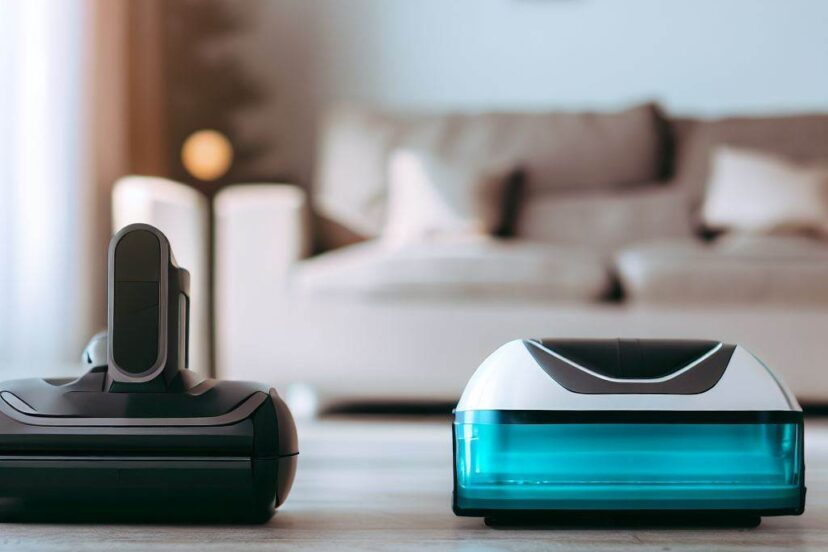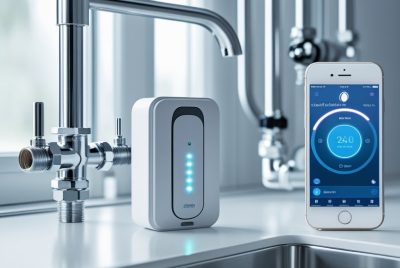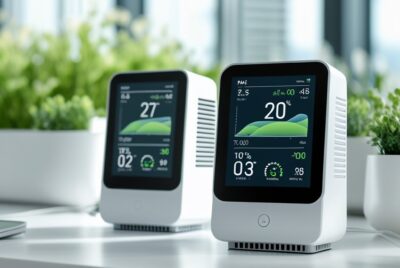Roborock vs Roomba: The Battle of Smart Vacuums
*We may earn a commission for purchases made using our links. Please see our disclosure to learn more.
Roborock vs Roomba: A Comprehensive Comparison Guide
Roborock vs Roomba hos to Choose? Making the leap between Roborock and Roomba can be a tough decision, as both brands offer high-quality robot vacuums with distinct features. As someone who has tested both extensively, I’ve come to appreciate the unique strengths each brings to the table. “If you’re looking for advanced mapping and automation, Roborock has the edge.” This makes it an excellent choice for those who prefer a hands-off approach to cleaning.

Roomba, on the other hand, has a legacy of reliability and strong suction power. Many users, myself included, find Roomba’s straightforward design and efficient cleaning patterns highly effective. Roborock offers mopping capabilities that Roomba doesn’t provide in most models, giving it an extra layer of functionality if you want more than just vacuuming.
In this blog post, I’ll break down the essential differences and similarities between these two leading brands. Whether you prioritize advanced tech features or simple, reliable performance, I’ll help you decide which robot vacuum suits your needs best.
Roborock vs Roomba: Brand Overview

Roborock and Roomba are two key players in the robotic vacuum market, each with unique histories, market strategies, and technologies.
Company Histories
Roomba, created by iRobot, has been around since 1990. It’s one of the pioneers in smart home cleaning devices. Roborock, on the other hand, was founded in 2014. Despite being newer, it has quickly gained traction. The longer history of Roomba has allowed it to build a strong reputation. Roborock’s rapid rise demonstrates its innovative approach and effective market penetration.
Market Presence
Roomba has a broad market presence, with products available globally. They cater to a wide range of price points, addressing different customer needs. Roborock is also expanding its market presence, focusing heavily on online sales. While Roomba tends to dominate in physical retail, Roborock leverages its strong online presence. Both brands offer products ranging from budget-friendly models to high-end units, ensuring a wide customer base.
Technology Philosophy
Roomba focuses on raw cleaning power, particularly on carpets. Their machines are known for strong suction and durability. In contrast, Roborock emphasizes advanced navigation and versatility. They integrate mopping functionalities and superior obstacle avoidance technology. Roomba’s approach is straightforward: strong, reliable cleaning. Roborock aims to blend cleaning power with smart technology, offering features like mapping and customizable cleaning paths.
Product Line Comparison for Roborock vs Roomba

Roborock and Roomba each offer a wide range of robotic vacuums, designed to cater to different needs and preferences. Below, I’ll break down their product lines to help you understand what each brand brings to the table.
Roborock Product Range
Roborock’s lineup includes several models, focusing primarily on advanced navigation, mopping features, and powerful suction. Their high-end models, like the Roborock S7, offer sonic mopping and advanced mapping. They also feature multi-level mapping which is useful in homes with multiple stories.
The mid-range Roborock S5 Max provides smart mapping and customizable cleaning schedules. It’s noted for its efficient cleaning and mopping combo, making it suitable for mixed floor types.
For budget-conscious buyers, the Roborock E4 delivers solid performance with basic navigation and app control. It might lack some high-end features, but it’s effective for simpler tasks.
Roomba Product Range
Roomba’s lineup includes a diverse range from basic models to advanced versions with cutting-edge tech. The Roomba s9+ stands at the top with powerful suction, smart mapping, and a self-emptying base station. It’s designed for those who want all the bells and whistles.
The mid-range Roomba i7+ offers similar features but at a slightly lower price point, including smart mapping and a self-emptying bin. It’s ideal for homes with pets due to its specialized brushes and strong suction.
On the lower end, the Roomba 600 series provides reliable cleaning with basic features such as adaptive navigation and app control. It’s a good entry point for those new to robotic vacuums without breaking the bank.
Each brand has its strengths, so your choice will depend on your specific cleaning needs and budget.
Roborock vs Roomba: Core Technologies and Innovations

Roborock and Roomba both bring unique technologies and innovations to the table. Roborock is notable for its advanced navigation, mopping capabilities, and automation. Roomba, on the other hand, excels in cleaning performance and has a long history of reliability.
Roborock Innovations
Roborock leads in advanced navigation technology. The brand uses LiDAR navigation that maps your home with precision. LiDAR lets these vacuums create detailed floor plans, improving cleaning efficiency.
Another standout feature is mopping technology. Models like the Roborock S8 Pro Ultra can vacuum and mop simultaneously. The dock’s dual water tanks and mop pad washing capabilities reduce manual maintenance.
Roborock also excels in automation. Their vacuums can auto-empty dirt, wash and dry mop pads, and even refill water tanks. This level of automation minimizes user intervention, making Roborock a convenient choice for busy people.
Roomba Innovations
Roomba vacuums are known for their cleaning performance. Their vacuums use powerful suction to clean various floor types effectively. On carpets, Roomba has a clear edge, making it ideal for homes with lots of carpeting.
Roomba also uses Dirt Detect™ technology. This feature allows the vacuum to detect particularly dirty areas and spend more time cleaning them. It ensures better cleaning results in high-traffic zones.
Another key innovation is self-emptying technology. Roomba’s Clean Base™ Automatic Dirt Disposal allows the vacuum to empty itself into a larger bin. This means users only need to empty the Clean Base occasionally, reducing daily maintenance.
By focusing on these innovations, Roborock and Roomba have developed strong niches that cater to different cleaning needs and preferences.
Cleaning Performance and Capabilities for Roborock vs Roomba

When it comes to cleaning performance and capabilities, Roborock and Roomba each offer unique strengths. This section will explore the suction power, navigation, mapping, battery life, and autonomy of these robotic vacuums.
Suction Power and Efficiency
Roomba vacuums generally excel in suction power, especially on carpets. The higher-end Roomba models are designed to handle deep cleaning tasks and can pick up more embedded dirt and pet hair. They are particularly effective on thicker carpets where more suction force is required.
Roborock also offers powerful suction but shines more when it comes to versatility and efficiency. Their models often include adjustable suction levels, allowing them to perform well on both hard floors and carpets. Roborock’s efficiency is often boosted by features like carpet detection, which automatically increases suction when a carpeted area is identified.
Roborock vs Roomba: Navigation and Mapping
In terms of navigation and mapping, Roborock generally outperforms Roomba. Roborock models feature advanced LiDAR navigation systems that create precise maps of your home. This allows them to clean in a methodical, efficient manner, making sure no spots are missed.
Roomba uses a combination of cameras and sensors for navigation. While these are effective, they may sometimes be less accurate in creating detailed maps compared to Roborock’s LiDAR. Still, Roomba’s navigation is reliable and includes features like room-specific cleaning and virtual barriers.
Both brands offer solutions that can resume cleaning where they left off if interrupted. This feature ensures comprehensive coverage without unnecessary repetition.
Battery Life and Autonomy
Roomba and Roborock both include models with extended battery life, suitable for cleaning large homes in one go. Higher-end Roomba models can run for up to 120 minutes before needing a recharge. They also return to their charging docks autonomously and resume cleaning once recharged.
Roborock models offer similar battery performance, with some even surpassing the 150-minute mark. This high battery efficiency, combined with effective resource management, allows Roborock vacuums to clean larger areas without interruption.
Both Roomba and Roborock offer robust autonomy features that allow for minimal human intervention. They’ll return to their docks to recharge and continue cleaning when ready.
By focusing on these key aspects, I’ve highlighted the strengths and differences in Roomba and Roborock’s cleaning performance and capabilities.
User Experience and Smart Home Integration

When comparing Roborock and Roomba, user experience and smart home integration are critical aspects to consider. Both brands offer unique app features and support for various smart home ecosystems.
App Features and Controls
The apps for Roborock and Roomba provide different levels of control and customization. With the Roborock app, I can schedule cleanings, set no-go zones, and view detailed cleaning maps. It also offers various cleaning modes, such as quiet, balanced, and turbo, which can be changed based on my needs.
Roomba’s app has similar scheduling features but stands out with its advanced, customizable cleaning patterns. The app uses Imprint Smart Mapping, which allows me to control which rooms to clean and in what order. The app is also updated regularly to improve performance and add new features, making navigation efficient and user-friendly.
Smart Home Ecosystem Compatibility
Both Roborock and Roomba are compatible with major smart home systems. They work well with Google Assistant, Amazon’s Alexa, and Apple’s Siri, allowing voice commands for starting, stopping, and scheduling cleaning routines. This integration helps make my home automation seamless.
Roborock is particularly known for its smooth connection with ecosystems like Xiaomi Home, adding to its versatility. Roomba, on the other hand, offers an edge with its integration capabilities with iRobot’s own Smart Home products, which can sync various home devices for a smarter living experience.
Smart home integration ensures that these devices enhance my home automation, making daily cleaning both effortless and efficient.
After-Sales Support and Warranty
Both Roborock and Roomba offer strong after-sales support and warranty options. Understanding these services can be crucial for long-term satisfaction with your purchase.
iRobot (Roomba):
Roomba provides a one-year limited warranty for most of its models. This warranty covers manufacturing defects and repairs. I find the customer support responsive, and they offer various ways to contact them—phone, email, and chat.
Roborock:
Roborock also offers a one-year limited warranty that covers manufacturing defects. From my experience, their customer service is efficient. They provide support through email and online forms, which is helpful.
Comparison Table
| Feature | Roomba | Roborock |
| Warranty | 1 year | 1 year |
| Support Channels | Phone, Email, Chat | Email, Online Forms |
| Coverage | Manufacturing Defects | Manufacturing Defects |
Customer service can make a significant difference. I’ve noticed that quick and easy access to help often results in a better user experience. Both companies seem committed to providing adequate support, but having multiple contact options with Roomba can be more convenient.
In conclusion, while both brands offer similar warranties, the added support channels for Roomba may give it a slight edge.
Frequently Asked Questions
I’ve compiled answers to some common questions about Roborock and Roomba. We’ll look at their performance on pet hair, key differences between the latest models, navigation technology, mopping capability, value for money, and battery life.
1. Which is better for pet hair removal, Roborock or Roomba?
If you’re dealing with pet hair, Roomba has the edge. Roombas are known for their powerful suction on carpets, which helps pick up pet hair effectively. Roborock also performs well, but Roomba’s specialized brushes can give it a slight advantage in homes with multiple pets.
2. What are the main differences between the latest Roborock and Roomba models?
The latest Roomba models excel in raw cleaning power, while Roborock stands out in advanced navigation and mopping capabilities. The Roborock S8 Pro Ultra, for instance, boasts up to 2,500 Pascal (Pa) suction power compared to Roomba’s 2,200 Pa in its strongest model.
3. How do Roborock and Roomba vacuums compare in terms of navigation technology?
Roborock vacuums often have superior navigation technology, featuring advanced laser systems that map your home effectively. Roomba also has good navigation but relies more on cameras and sensors, which can be less precise in low-light conditions.
4. Can either Roborock or Roomba vacuums mop floors as well as vacuum?
Roborock models generally offer better mopping capabilities. Many Roborock vacuums come with built-in mopping functions that can handle light mopping tasks. Roomba’s offerings in this area are more limited, focusing primarily on vacuuming performance.
5. Which brand offers better value for money, Roborock or Roomba?
Roborock often provides better value for money due to its strong performance in both vacuuming and mopping, combined with advanced navigation features. Roomba tends to be more expensive, particularly for its high-end models, but it does deliver powerful cleaning performance.




